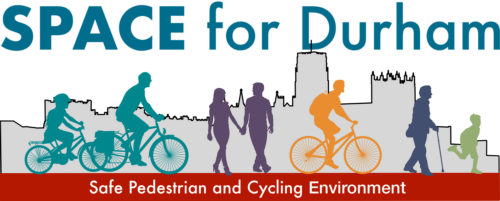The Green Party has provided us with a link to the national Green Party transport policy to share with voters.
We have selected a few excerpts from their comprehensive policy document which relate to the themes covered in our questions:
Walking and Cycling
TR150 These will be given the highest priority in transport planning for the following reasons:
1. They both benefit the user through increasing their health and well-being, which no other mode of transport does.
2. They have the least environmental impact.
3. They are both available to use by the greatest number of the population, particularly children. It is of course recognised that there are some people who are not able to walk or cycle, and for this reason disabled access is given equal priority.
4. They benefit the social environment in which they take place by increasing contact between people. They also enhance the vitality of our cities, towns and villages.
The aim of these policies is to make it possible for walking and cycling to account for most short distance journeys made.
TR160 All opportunities must be taken to maximise the convenience, safety, security and comfort of pedestrians. Planning for pedestrians will aim to provide both networks of routes and to ensure other areas are pedestrian-orientated. A priority will be given to providing a minimum standard of provision for pedestrians that would ensure that all networks are complete and usable by all pedestrians.
TR170 Cycling has decreased in modal share as roads have become dominated by cars. The fear of the potential of motor vehicles to inflict injury to cyclists in accidents, and the harm to their health from vehicle pollution, has been primarily responsible for this. This has led to many cyclists choosing to use pedestrian areas rather than roads. A lack of recognition of the problems faced by cyclists in being able to travel safely and conveniently has led to a huge lack of resourcing of all types of cycling infrastructure.
TR172 Cycles are a vehicle and, as such, cycling should, wherever possible, take place on roads or, where not feasible, on cycle paths segregated from pedestrians. To this end, local authorities would need to review all roads regularly, and the measures needed to bring them up to a standard of safety required for cycling. In targeting support, including funding, local authorities will be expected to ensure that the most congested routes in urban areas will be given high priority, and that any works must ensure the completeness of the route.
TR173 There will be a hierarchy of measures to create this provision. The primary objective of these will be reducing speeds and volume of motorised traffic. Where this cannot achieve a safe cycling environment, various forms of segregation from vehicles will be implemented, including routes completely away from the road system.
TR174 Where the cycle infrastructure is shared with pedestrians or horse riders, or where the cycle provision on roads is shared with bus priority measures, adequate space must be provided for the two users to share it safely.
TR183 Training for children in all practices relating to cycle use, e.g. riding and maintenance, will become an integral part of the education system, and will be supported by the provision of safe places for children to learn to cycle. Provision for the training of adults will also be supported and must be an important element in promoting cycling in the short term whilst road conditions are particularly hostile to cyclists.

Leave a Reply